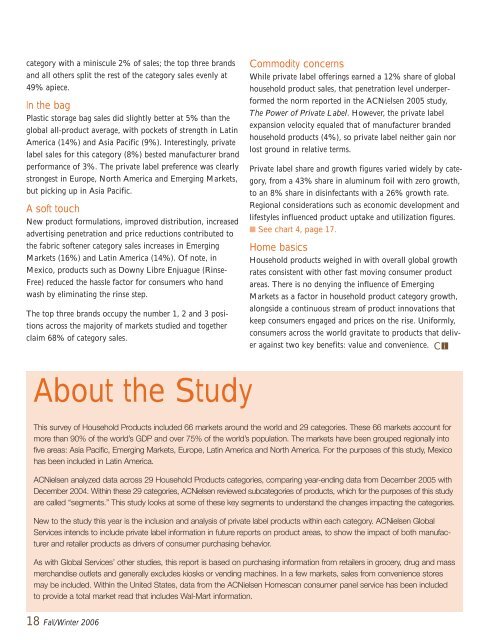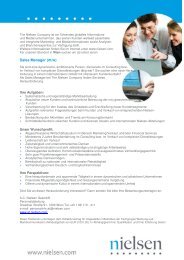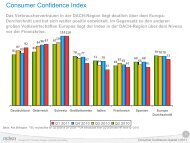You also want an ePaper? Increase the reach of your titles
YUMPU automatically turns print PDFs into web optimized ePapers that Google loves.
category with a miniscule 2% of sales; the top three brands<br />
and all others split the rest of the category sales evenly at<br />
49% apiece.<br />
In the bag<br />
Plastic storage bag sales did slightly better at 5% than the<br />
global all-product average, with pockets of strength in Latin<br />
America (14%) and Asia Pacific (9%). Interestingly, private<br />
label sales for this category (8%) bested manufacturer brand<br />
performance of 3%. The private label preference was clearly<br />
strongest in Europe, North America and Emerging Markets,<br />
but picking up in Asia Pacific.<br />
A soft touch<br />
New product formulations, improved distribution, increased<br />
advertising penetration and price reductions contributed to<br />
the fabric softener category sales increases in Emerging<br />
Markets (16%) and Latin America (14%). Of note, in<br />
Mexico, products such as Downy Libre Enjuague (Rinse-<br />
Free) reduced the hassle factor for consumers who hand<br />
wash by eliminating the rinse step.<br />
The top three brands occupy the number 1, 2 and 3 positions<br />
across the majority of markets studied and together<br />
claim 68% of category sales.<br />
Commodity concerns<br />
While private label offerings earned a 12% share of global<br />
household product sales, that penetration level underperformed<br />
the norm reported in the ACNielsen 2005 study,<br />
The Power of Private Label. However, the private label<br />
expansion velocity equaled that of manufacturer branded<br />
household products (4%), so private label neither gain nor<br />
lost ground in relative terms.<br />
Private label share and growth figures varied widely by category,<br />
from a 43% share in aluminum foil with zero growth,<br />
to an 8% share in disinfectants with a 26% growth rate.<br />
Regional considerations such as economic development and<br />
lifestyles influenced product uptake and utilization figures.<br />
■ See chart 4, page 17.<br />
Home basics<br />
Household products weighed in with overall global growth<br />
rates consistent with other fast moving consumer product<br />
areas. There is no denying the influence of Emerging<br />
Markets as a factor in household product category growth,<br />
alongside a continuous stream of product innovations that<br />
keep consumers engaged and prices on the rise. Uniformly,<br />
consumers across the world gravitate to products that deliver<br />
against two key benefits: value and convenience. C i<br />
About the Study<br />
This survey of Household Products included 66 markets around the world and 29 categories. These 66 markets account for<br />
more than 90% of the world’s GDP and over 75% of the world’s population. The markets have been grouped regionally into<br />
five areas: Asia Pacific, Emerging Markets, Europe, Latin America and North America. For the purposes of this study, Mexico<br />
has been included in Latin America.<br />
ACNielsen analyzed data across 29 Household Products categories, comparing year-ending data from December 2005 with<br />
December 2004. Within these 29 categories, ACNielsen reviewed subcategories of products, which for the purposes of this study<br />
are called “segments.” This study looks at some of these key segments to understand the changes impacting the categories.<br />
New to the study this year is the inclusion and analysis of private label products within each category. ACNielsen Global<br />
Services intends to include private label information in future reports on product areas, to show the impact of both manufacturer<br />
and retailer products as drivers of consumer purchasing behavior.<br />
As with Global Services’ other studies, this report is based on purchasing information from retailers in grocery, drug and mass<br />
merchandise outlets and generally excludes kiosks or vending machines. In a few markets, sales from convenience stores<br />
may be included. Within the United States, data from the ACNielsen Homescan consumer panel service has been included<br />
to provide a total market read that includes Wal-Mart information.<br />
18 Fall/Winter 2006











